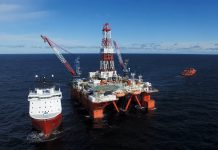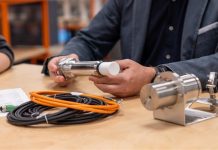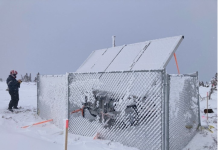Ocean Science specialist Kongsberg Discovery is strengthening its industry-leading EK80 echo-sounder product family with unprecedented wide-band low-frequency capability that will enable customers across governments, academia, and industry to gain a much more detailed picture of the ocean environment than has previously been possible, amid an increasing focus on sustainable management of the oceans.
The EK80 product family is part of Kongsberg Discovery’s portfolio of monitoring and measuring tools and is used for all types of ocean research. The product family has historically been used primarily for biomass assessments, but the instruments are seeing increased adoption for other biological, physical, and chemical oceanography applications. An EK80 vessel-mounted system typically comprises six transducers operating at different sound frequency spectra, matched with transceivers, software, and planning tools.

The transducers are calibrated to give highly accurate, quantitative metric values of application targets. Kongsberg Discovery’s new ES18-11 MK2 transducer widens the operational frequency spectrum of its existing ES18 split-beam transducer from 18 kHz to at least 14 to 22 kHz, increasing the resolution of the data as well as providing more information for target identification from this frequency band. The development project also led to an improvement in transducer element design reducing the challenge with ringing, which mean that the transducer can be used for both shallow and deep-water measurements.
“The ES18-11 MK2 further enhances the EK80’s overall performance and brings us one step closer to uncovering the mystery of the oceans,” said Lars Andersen, VP Ocean Science at Kongsberg Discovery. “It is an important innovation that we are certain will contribute to increasing knowledge of ocean biology, physics, and chemistry, in line with UN SDG 14 Life Below Water.” The core application of ESI8-11 MK2 remains the identification of biological targets. The 18 kHz transducer is already common on most research vessels, but the wider bandwidth of ES18-11 MK2 can reveal the much richer biological diversity actually present. Findings can be used to fingerprint what species are present, and thus uncover components of the food chain in that area.
“Any fish stock that is commercially fished must have a management plan, and the MS18-11 MK2 will help to generate more holistic ecosystem assessments so that authorities can make better stock management decisions,” Andersen said. Understanding life in the water column is also key for environmental impact studies, for example in offshore wind-park development where EK80s already have been deployed to collect ecosystem data in Europe and the US. The EK80 system has been and will continue to be developed over decades with input from leading marine institutes worldwide, with the overall goal of improving marine ecosystem management.
Over the last few years CRIMAC, a center for research-based innovation in Norway, has been the focal point of this development. “Adding low-frequency wideband capacity is a game-changer for ocean research by providing much more details from a spectrum that holds a lot of information,” said Nils Olav Handegard, leader of CRIMAC and senior Institute of Marine Research (IMR) researcher. Normal production of the ES18-11 MK2 has started, with scheduled deliveries from August.
More info www.kongsberg.com



























